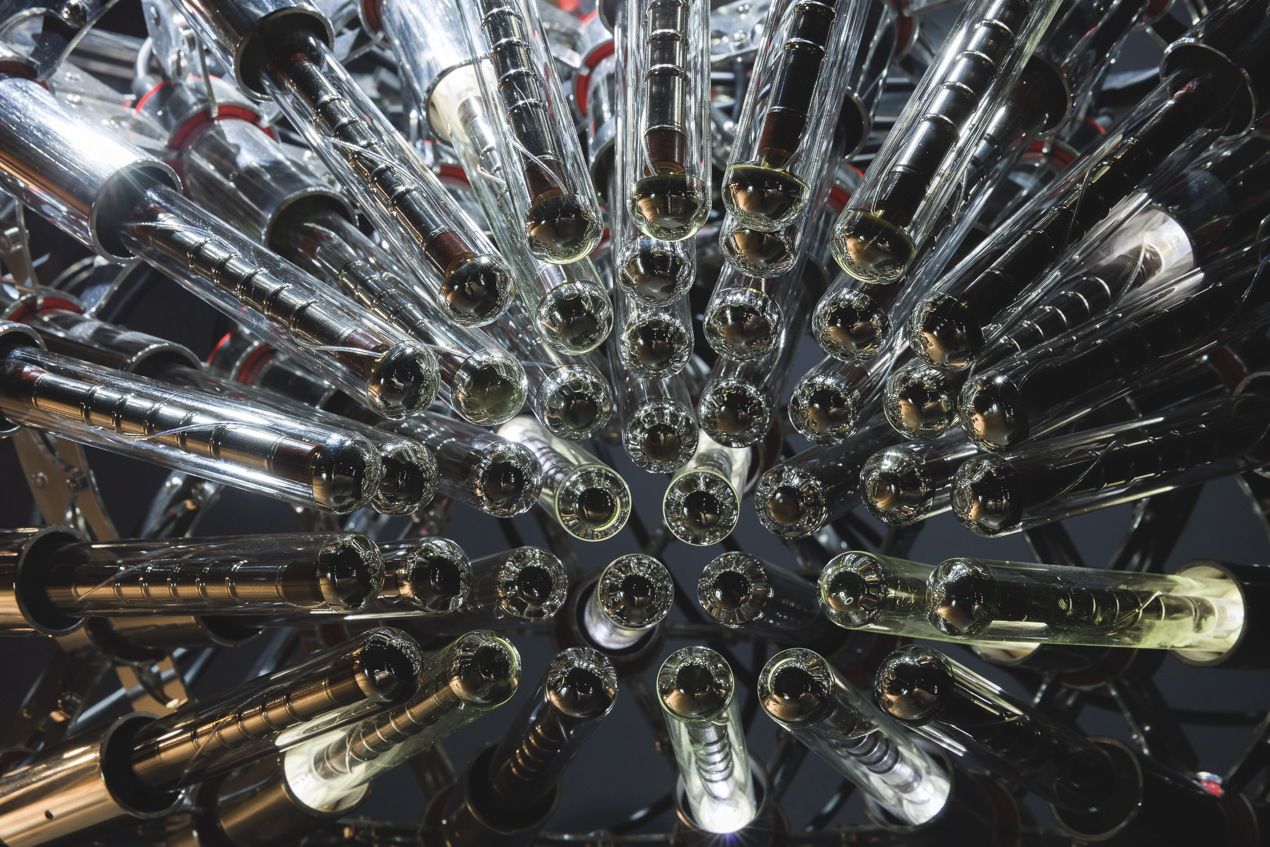Preview: Broken Symmetries
An international exhibition premiering in Liverpool brings together artists who aim to understand and question the physical world by navigating the shifting realities of modern science
In a thousand years, it’s unlikely that any of the words we use today will be understood. We may even have different ways of communicating. The limits of language and the boundaries between meaning and meaninglessness are at the heart of One1one, an art installation by Haroon Mirza and Jack Jelfs, working together as Hrm199.
The work of Hrm199 and nine other artists form Broken Symmetries, an exhibition at FACT, Liverpool, that has developed from the gallery’s partnership with the arts programme at CERN, the European Organisation for Nuclear Research in Switzerland. The artists have all been associated with CERN’s Collide International Residency Award, and Broken Symmetries builds on the ideas formed at their residencies.
In One1one, visitors can sit inside a circle with eight speakers arranged around the outside. Hanging above the circle is an octagonal chandelier with eight strips of LED lights that react in a synchronised way when sound and light are introduced.
“It’s set thousands of years into the future, where human vocabulary will be completely different, but it also harks back to ancient stone circles,” says Jelfs. “It’s more like walking into a ritual, and constitutes a kind of shamanistic, sensory experience like a magic spell, or rather the undoing of a magic spell.”
Outside the circle, and therefore the spell, a 56” TV monitor shows an eight-minute video of a woman reading out texts. These are an unrelated jumble: snatches from Google Translate, algorithms, predictive text, badly translated or transcribed excerpts of classic texts such as the Tao Te Ching, which when put together form a magical invocation but also show the fragmentation of language and communication.
“There were many ritualistic elements to the work at CERN, where scientists are trying to find out what the world is made of, and the residency made us think about ancient sites,” says Mirza. “In a way CERN is similar to Stonehenge, which could have been a simple scientific experiment to try and understand how celestial objects move around the planet after all. Both concern geometric forms, circles, octagons, hexagons and so on.”
South Korean artist Yunchul Kim’s Cascade literally lights up a room. It’s made from fragile glass tubes, contorted into blinking, pulsing chandelier-like installations, accompanied by an unearthly thrum, like being trapped inside a mad scientist’s laboratory, or brain. Cascade is a response to muons – subatomic particles that can detect hidden chambers in the Pyramids or bombs in public places. Most of the time, though, muons whizz benignly around and through us. In Cascade, when muons are detected, the tubes flash with light, creating a beautiful visualisation of the otherwise invisible.
Mirza and Jelfs are keen to dispel misconceptions that modern art is not proper art because it’s not always strictly visual. “Western civilisation is heavily ocularcentric, where seeing and the written word take primacy over other senses, but many more acoustic forms of art are emerging,” says Mirza.
The artworks in Broken Symmetries are not about science per se, but about the desire to understand how things work.
“What our work has in common with science is the endeavour,” he adds. “Scientists look at patterns, but so do art, religion and the other humanities that form culture. Like scientists, we are trying to explain our world, and our experience at CERN has provided an interesting framework to use, with whatever tools are available. The subtext is that it’s about our human desire to engage with the unknown and the need to understand the patterns that govern our world. The geometry that emerges is the same, whether it’s art or science.”
Broken Symmetries is at FACT, Liverpool, 22 Nov-3 March 2019

Leave a reply
Your email address will not be published.